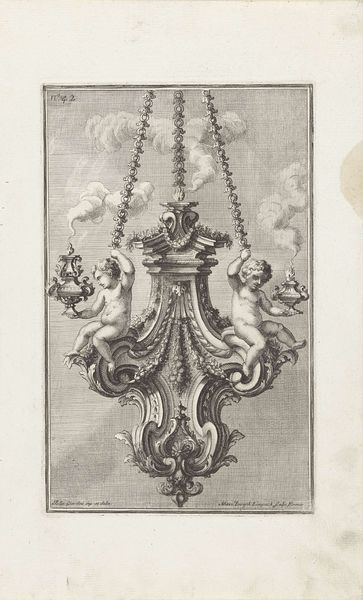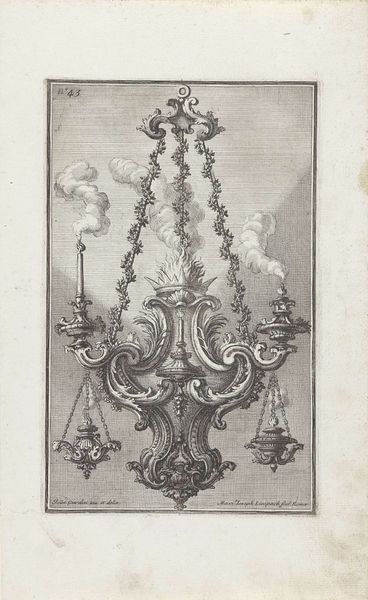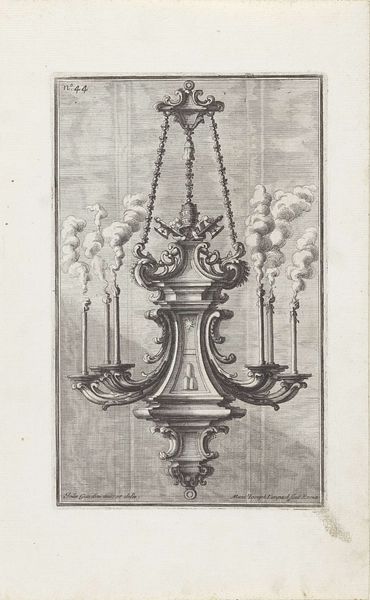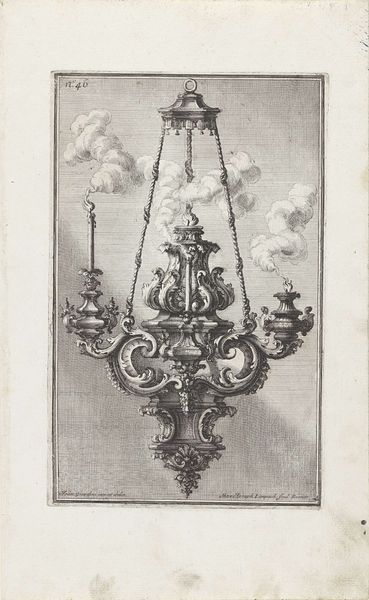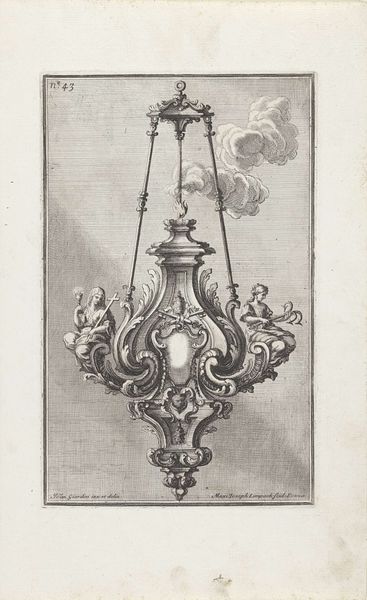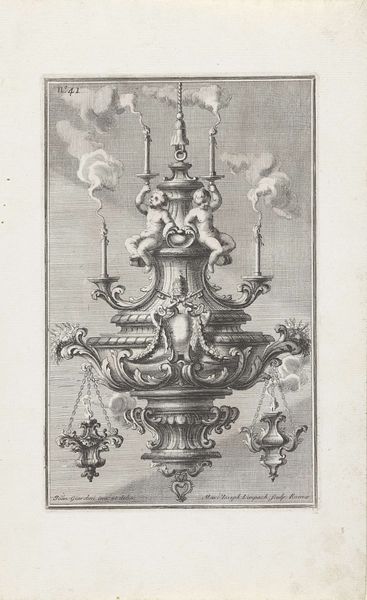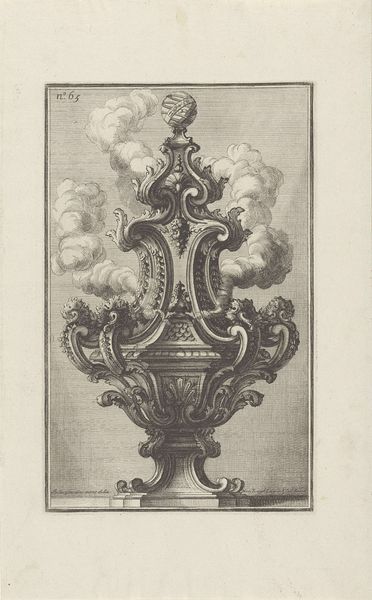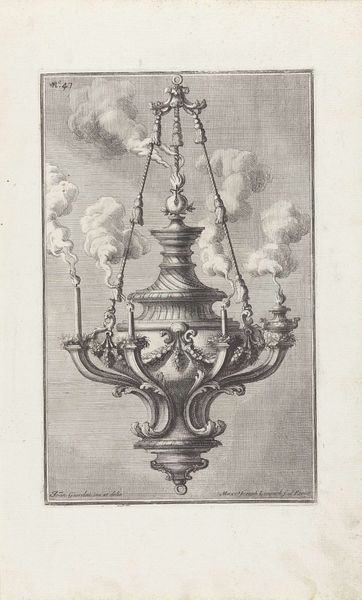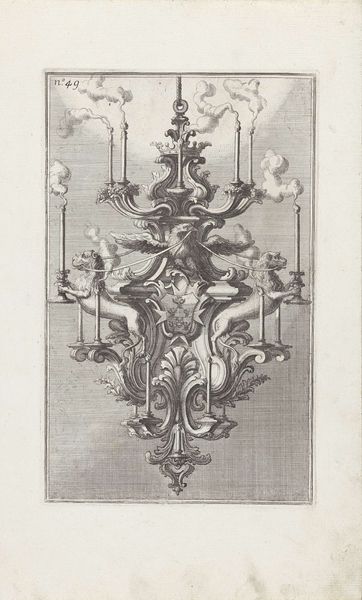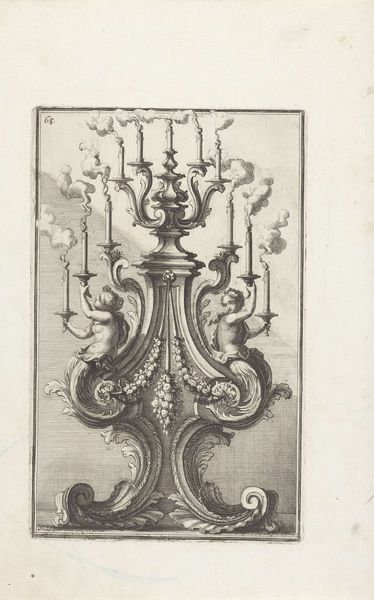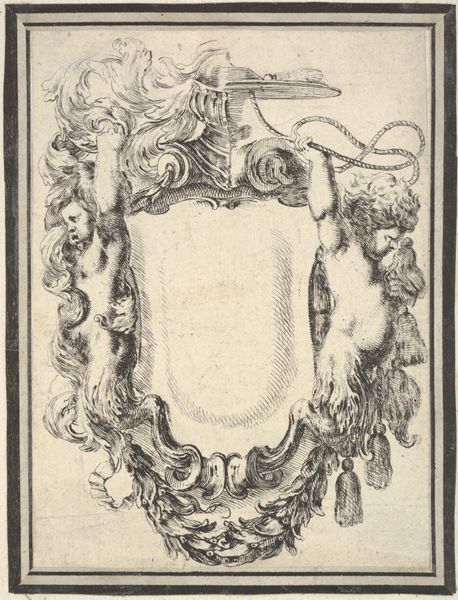
print, engraving
#
allegory
#
baroque
# print
#
figuration
#
line
#
decorative-art
#
engraving
Dimensions: height 275 mm, width 175 mm
Copyright: Rijks Museum: Open Domain
Editor: So, this print, "Chandelier with Two Putti and a Papal Coat of Arms" by Maximilian Joseph Limpach from 1714…it's incredibly detailed. The cherubs holding the candles give it such a playful yet formal mood. What do you make of this chandelier design? Curator: It is rich with symbols. Consider the putti. They're not merely decorative; they are age-old symbols of divine love, often associated with illumination and enlightenment. Notice how they flank a central flame. What do flames suggest to you? Editor: Light, obviously… maybe purification? Curator: Precisely. And look closely at the coat of arms – a papal symbol. The entire piece then becomes an allegory of sorts: the divine love illuminating and purifying the Church, represented by the Pope. It links earthly power to celestial blessing through carefully chosen visual cues. Editor: That’s fascinating. So the chandelier isn't just a chandelier, it's a whole symbolic message about the Pope's authority. Does the Baroque style itself add to this message? Curator: Indeed. The flamboyance, the over-the-top ornamentation – it's all intentional. The Baroque aesthetic was often employed to project power and awe. The very lines scream confidence and established authority. The symbolism adds another layer. It invites reverence and underlines established power structures of the era. What do you feel about how different cultural elements work together here? Editor: I hadn't considered how interconnected everything is—the putti, the papal symbols, and even the style itself working together. Curator: Visual communication like this tells you so much about how people thought. Editor: I definitely see more in this print than just a pretty chandelier design. Thank you!
Comments
No comments
Be the first to comment and join the conversation on the ultimate creative platform.
